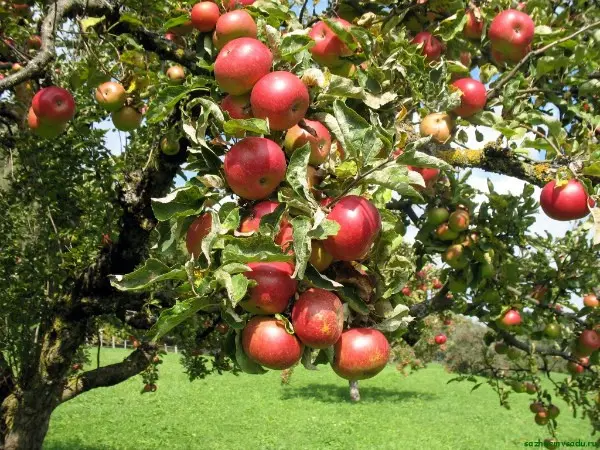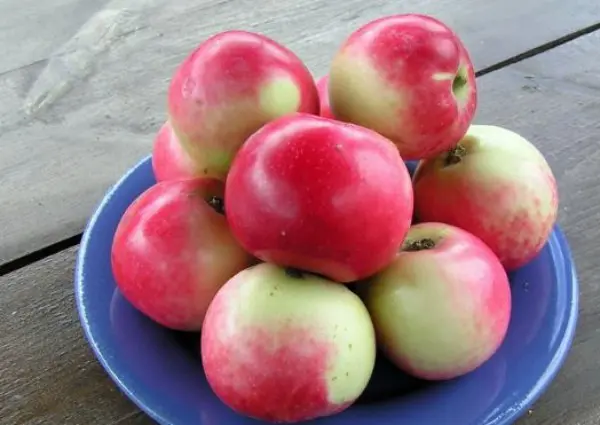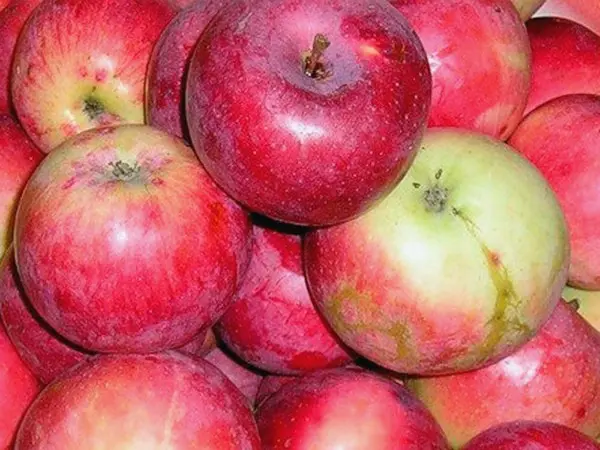Variety “Solntsedar” is the undisputed leader among summer apples. Beautiful, bulk, with a crimson blush, the fruits are highly valued by gardeners and consumers for their excellent taste. But this is not the only advantage of the variety. The apple tree “Solntsedar” endures the most frosty winters, which allows it to be grown not only in temperate climates, but also in northern latitudes.
Short description
The variety of apples “Solntsedar” was bred at the experimental horticulture station in Sverdlovsk artificially, as a result of free pollination of the apple tree “Anise Scarlet”. The resulting seedling was repeatedly hardened, as a result of which it acquired a stable immunity to cold and temperature extremes.

The apple tree of this variety is very attractive in appearance. An adult tree is low, with a round, dense, somewhat thickened crown, which becomes more spreading and drooping to the ground with age. During the period of fruit ripening, when a lot of bright, red-sided apples are literally scattered over the green foliage, the apple tree looks very picturesque and gives a special charm to the summer garden, moreover, no special care is required for this beauty.
The trunk and main branches of the apple tree are dark brown in color, young shoots are less intensely colored, but strongly pubescent. The branches are round in cross-section, located at a wide angle with respect to the trunk. The leaves are medium in size, slightly glossy above, dark green, with a barely noticeable bluish tint, below – grayish, well pubescent. The leaf blades are slightly serrated, narrowed towards the apex and rounded at the base, located at right angles to the branches. Petioles are short and dense, with several small stipules.

The apple tree blooms with large white, pinkish flowers along the edge. The fruits are medium (120–150 g) in size, regular round, slightly truncated in shape, occasionally there may be a slight ribbing. The peel of apples is smooth, shiny, slightly covered with a bluish bloom. At full maturity, it is creamy, yellow, sometimes greenish in color with an intense, blurred blush on one side of the fruit. Large subcutaneous dots are often visible under the skin.

The pulp is no less attractive than the fruit. It is snow-white, with pronounced red veins, coarse-grained, very juicy, sour-sweet in taste (sugar content 10,2%), sometimes a little tart, with a characteristic aftertaste of sweet wine. This variety of apples is consumed mainly fresh, but it is also possible to prepare jam, marmalade, jams and other preparations from them.

Characterization
The variety is included in the State Register for the Ural and Volga-Vyatka regions, where it is now the most popular. Soon, its merits were appreciated by the gardeners of the Volga region and other nearby areas, thanks to which apple trees began to be widely distributed and cultivated. Of course, these apples grow well in the Urals, but the ideal conditions for their cultivation are considered to be a continental climate with warm summers and long autumns.
As already mentioned, the Solntsedar apple tree is very winter-hardy, since its prototypes have been hardened in areas with a harsh climate. But, despite this, the variety is susceptible to various fungal diseases, especially scab. To get a high yield, planting an apple tree of this variety should be carried out in a sunny place. In addition, the tree should be regularly treated with antifungal drugs – this is preventive care.

Apples “Sunshine” are summer varieties. Their ripening begins in early August, but the fruits ripen not at the same time, but in 2-3 stages, thereby prolonging the pleasure of consumers. It is for this quality that many gardeners plant this variety. Plucked apples are stored for a short time – 2-4 weeks. After this period, the pulp loses its juiciness, becomes loose and tasteless. Cleaning is also not worth delaying, as ripe fruits quickly fall off the apple tree and deteriorate.
The yield of the variety is high – one apple tree can bear up to 80 kg of fruit. However, in order to achieve such abundant fruiting, one should wait 7-8 years. Young apple trees begin to bear fruit at 3-4 years of age, but the first few years their yield is quite low. A significant disadvantage of the variety is the periodic fruiting of old trees.

Blooming apple trees need cross-pollination. It is desirable that an aniseed apple tree grow next to them, for example, “Anis Sverdlovsky”.
Planting of young seedlings is carried out in the spring (at the end of March). For planting, it is better to choose an open area accessible to the sun, on which there were no fruit trees before. Since the variety is susceptible to fungal diseases, it is necessary to monitor the level of groundwater and soil moisture.
A hole for a seedling is dug a week before planting. The depth of the pit for an apple tree of this variety should be 50–70 cm, the diameter should be at least 0,5 m. 2–3 buckets of water are poured into a pre-dug hole, mineral mixtures or organic (compost, humus) fertilizers are added. The planting itself is carried out according to the usual scheme, acceptable for any variety of apple trees.
Video “Apple Tree Solntsedar”
See how the Solntsedar apple tree grows and bears fruit in the summer cottage.
Care
Proper tree care is the basis for high yields of any variety. If the landing is made in the right place, then further care consists in the following activities:
- in regular inspection of trees for damage and drying of branches;
- in the removal of diseased and dry branches, followed by healing of the cut points;
- in regular top dressing;
- in watering in the first year of life (in subsequent years, the apple tree needs watering only in abnormally hot conditions);
- in loosening the soil in near-trunk circles and between rows (many gardeners cover these plots of land with mulch to save themselves from the need for loosening, and thereby facilitate garden care);
- in whitewashing trunks in spring and autumn – this measure is necessary to disinfect the bark and rid it of pests;
- in regular processing (spraying) of apple trees from diseases;
- in crown formation.
Much attention should be paid to pruning trees. This variety is distinguished by the fact that the apple tree has a very dense crown, and if it is not thinned out, then real thickets are formed that interfere with the normal ripening of the fruit, and very quickly lead to a decrease in yield.
The main pruning is carried out in the spring, before bud break, but if necessary, these activities can be carried out in late autumn, when the movement of juices stops.

Caring for apple trees also consists in the regular fight against pests and diseases, especially fungal ones. This variety is most susceptible to diseases such as:
- scab (dark brown spots on foliage and fruits) – to combat it, the apple tree must be sprayed with a solution of urea;
- powdery mildew (white or grayish coating on leaves and fruits) – solutions of Bordeaux liquid, colloidal sulfur are used for processing;
- milky sheen (white or silvery coating on the leaves) – in this case, the apple tree needs to be treated with a solution of soda ash;
- fruit rot – the fight against this disease is to prevent the spread of the disease (removal and destruction of diseased fruits).
Of the pests, the apple tree is most often attacked by insects such as apple moth, leafworm, green aphid. Of course, they are not as harmful as fungal diseases, but they can pretty much spoil the appearance of the fruit and the tree itself. In this case, caring for an apple tree consists in treating the tree with insecticides (Karbofos, Enterobacterin, Bordeaux liquid) or available folk remedies.
Video “Crown Formation”
In this video, the head of the Ural Gardens nursery shows how to properly form the crown of fruit trees for fruiting.









